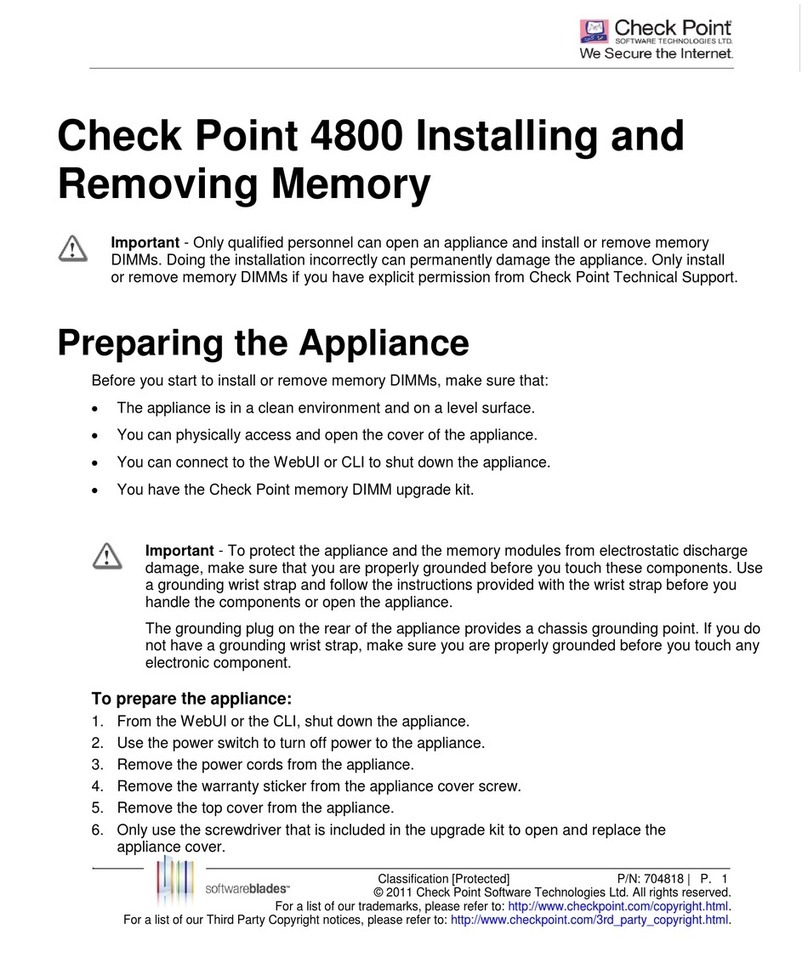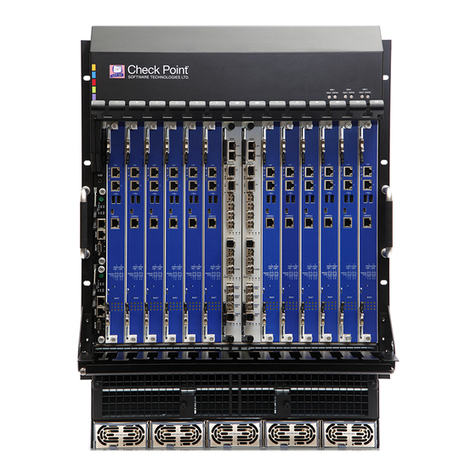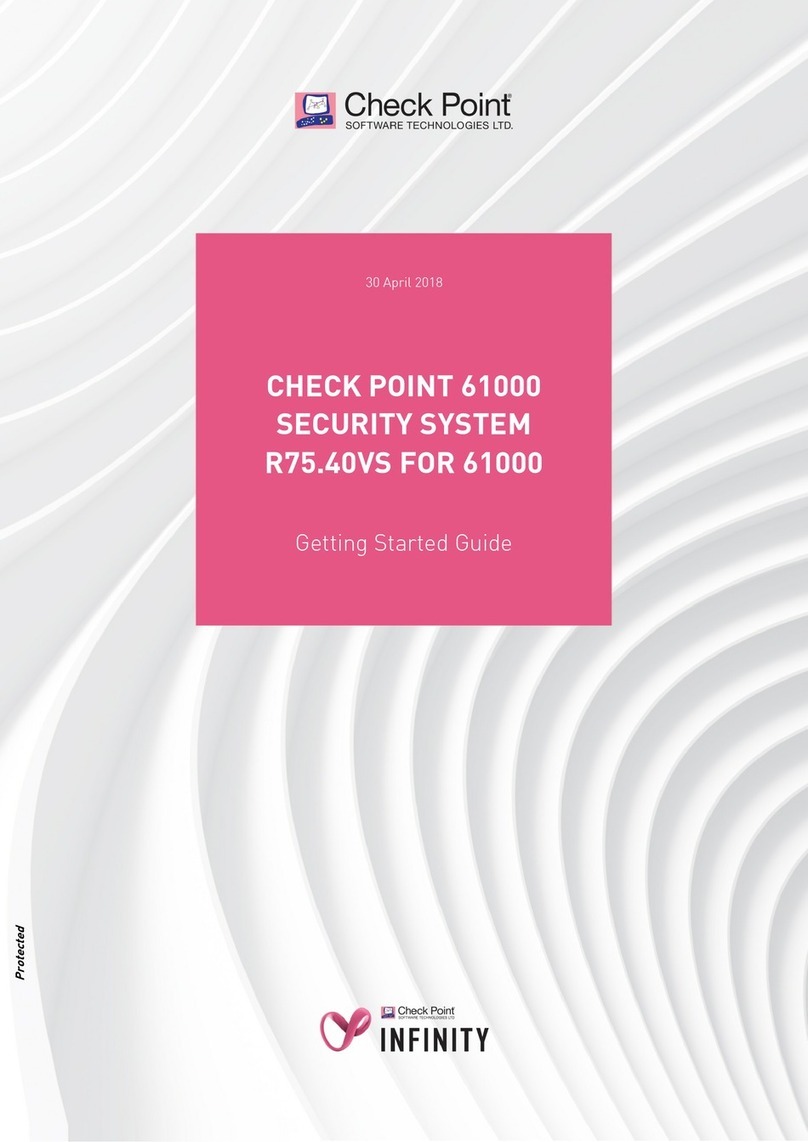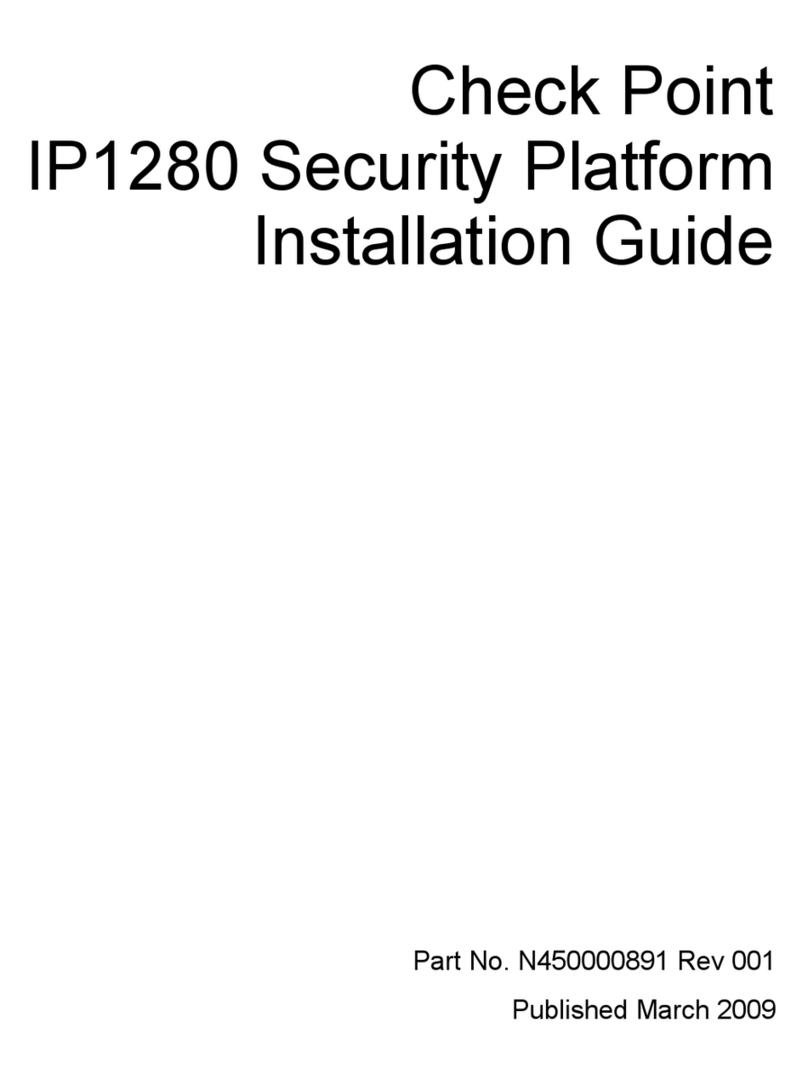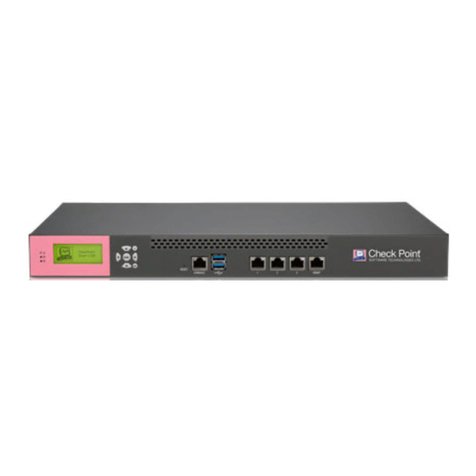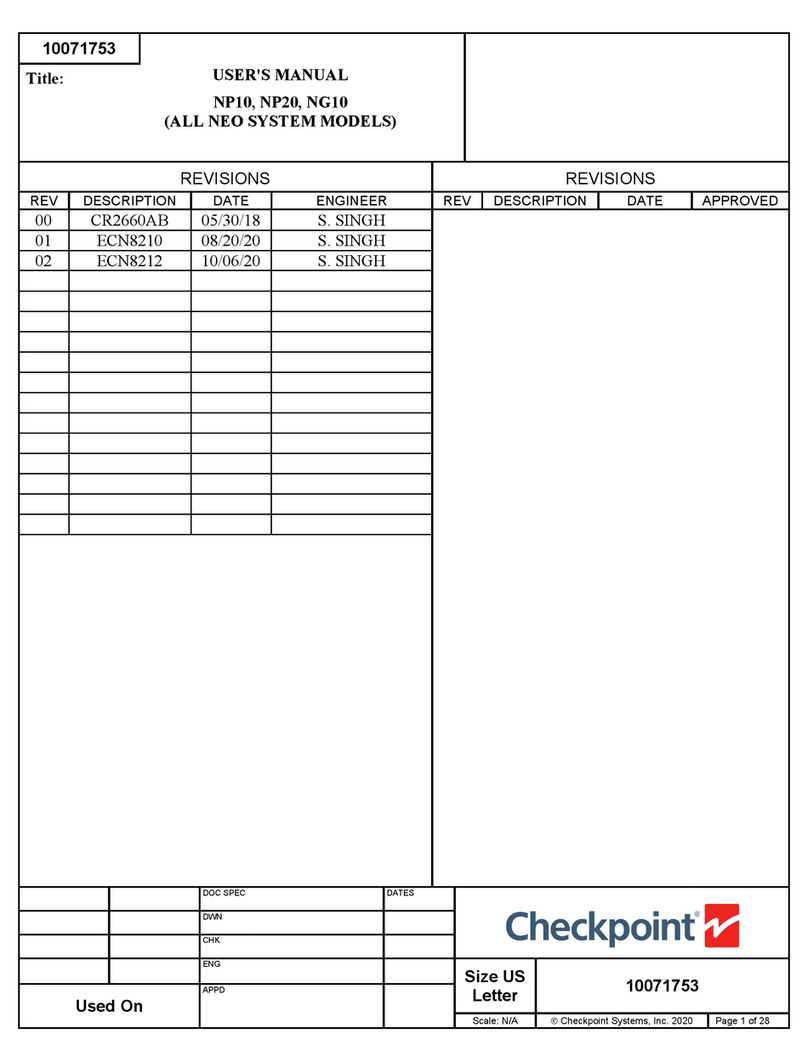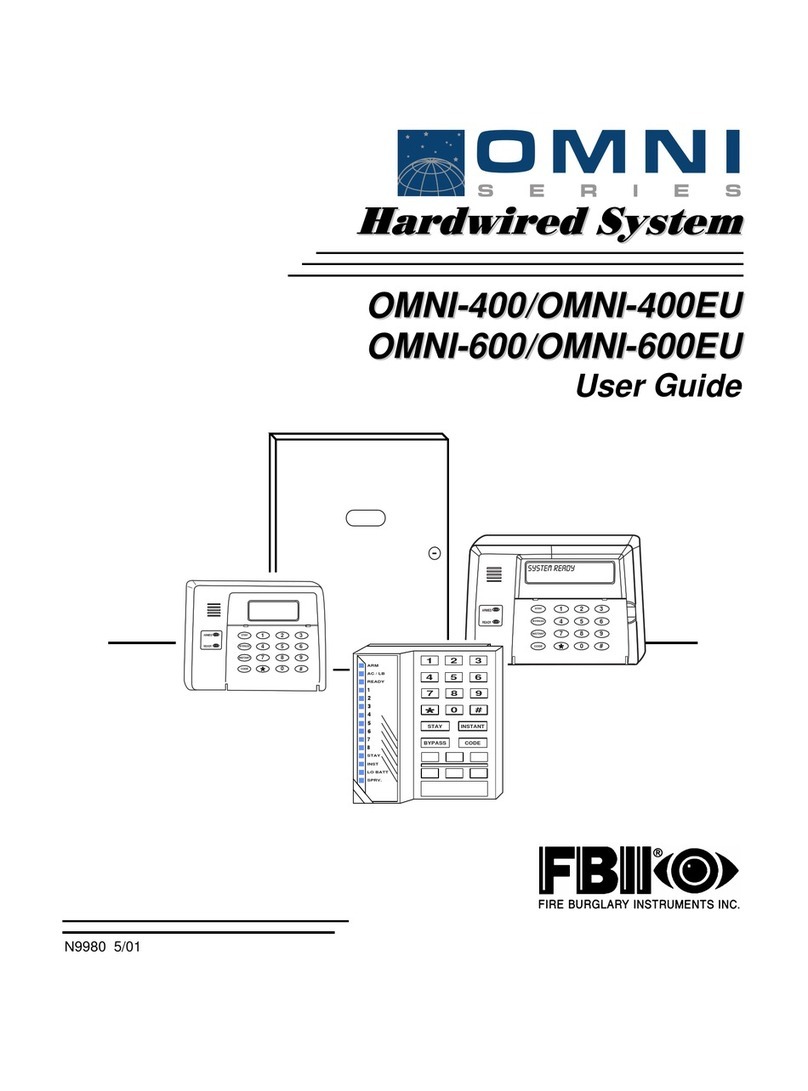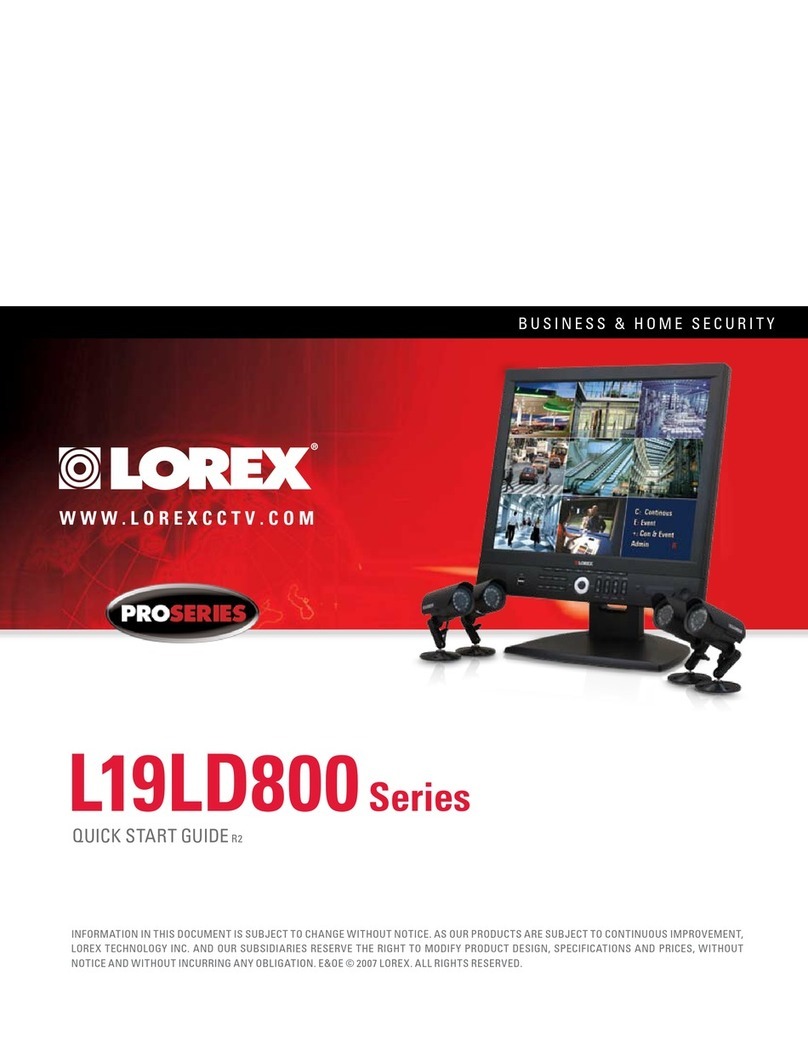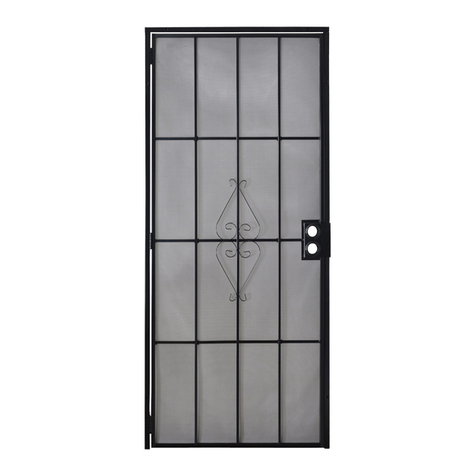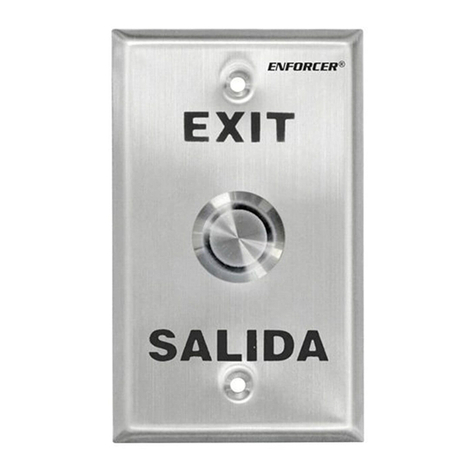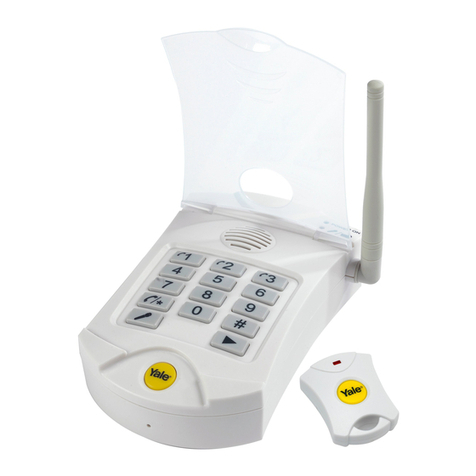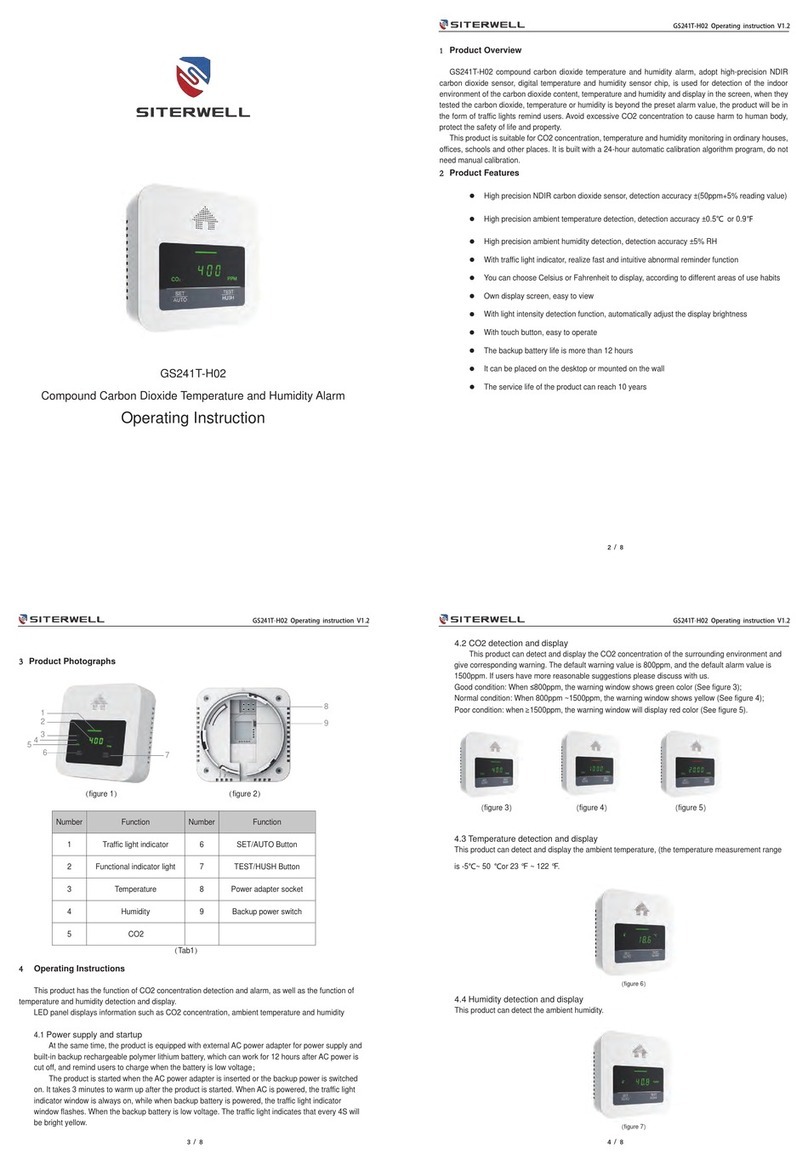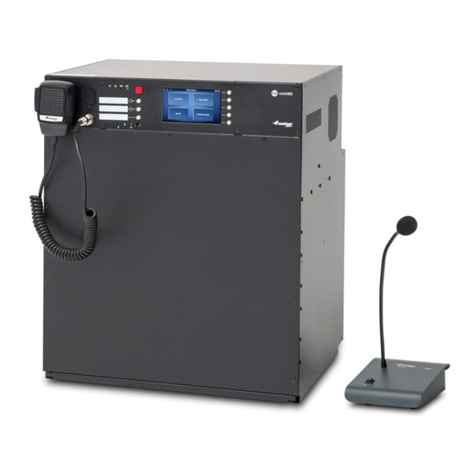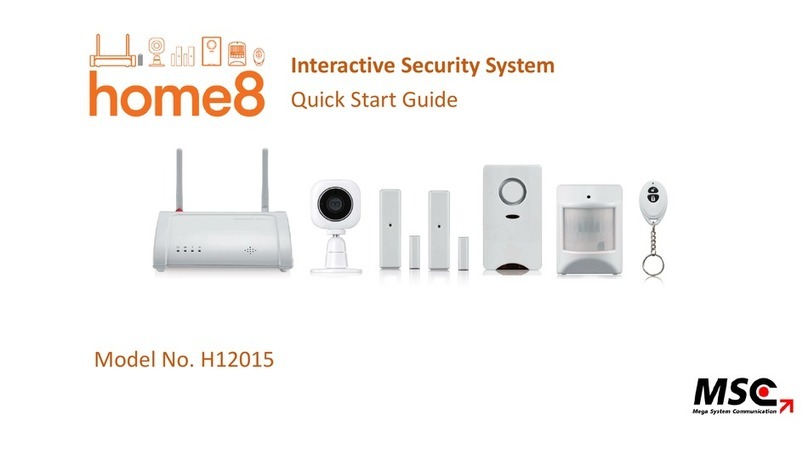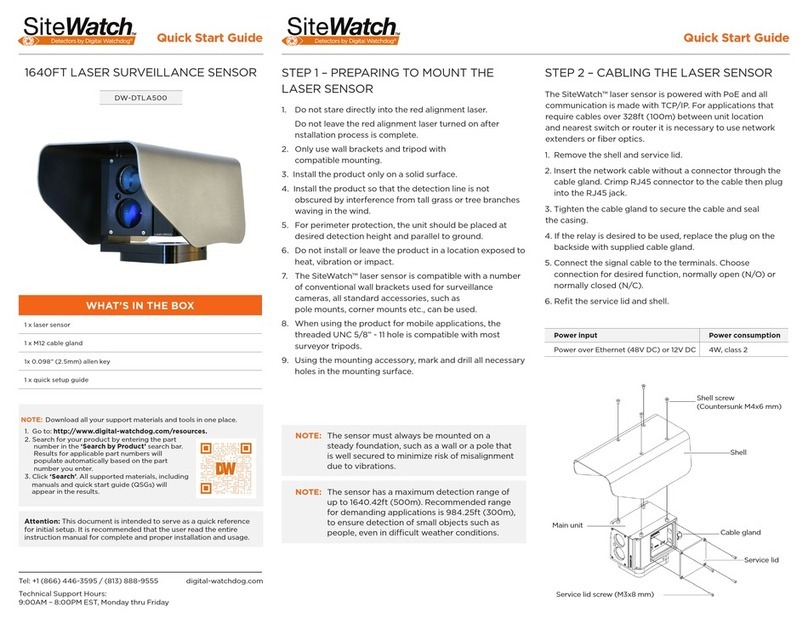Checkpoint NS40 User manual

10035527
NOTICE TO PERSONS RECEIVING THIS DRAWING
AND/OR TECHNICAL INFORMATION:
Title:
USER'S MANUAL
Checkpoint Systems claims propriety rights to the material disclosed hereon. This drawing
and/or technical information is issued in confidence for engineering information only and
may not be reproduced or used to manufacture anything shown or referred to hereon
without direct written permission from Checkpoint Systems to the user. This drawing and/or
technical information is the property of Checkpoint Systems and is loaned for mutual
assistance, to be returned when its purpose has been served.
THIS DRAWING AND/OR TECHNICAL INFORMATION IS THE PROPERTY OF
CHECKPOINT SYSTEMS, INC.
NS40 EAS SYSTEM:
USING NS40 PEDESTAL &
NEO CONTROLLER
REVISIONS REVISIONS
REV
DESCRIPTION
DATE
ENGINEER
REV
DESCRIPTION
DATE
APPROVED
00
CR2688R
08/13/20
S. SINGH
DOC SPEC
DATES
DWN
CHK
ENG
Size US
Letter 10035527
Used On
APPD
Scale: N/A
Checkpoint Systems, Inc. 2020
Page 1 of 21

USER'S MANUAL, NS40
CHECKPOINT SYSTEMS, INC. CONFIDENTIAL AND PROPRIETARY INFORMATION, FOR INTERNAL USE ONLY
Document No. 10035527 Rev. 00 Page 2 of 21
Important Information to our Users in North America
FCC Regulatory Compliance Statement
Checkpoint Systems, Inc., offers Electronic Article Surveillance (EAS) or Radio Frequency Identification Products
that have been FCC certified or verified to 47 CFR Part 15 Subparts B/C. Appropriately, one of the following labels
will apply to the approval:
NOTE: This equipment has been tested and found compliant within the limits for a class A digital
device, pursuant to Part 15 of the FCC Rules. These limits are designed to provide reasonable
protection against harmful interference when the equipment is operated in a commercial environment.
This equipment generates, uses, and can radiate interference to radio communications. Operation of
this equipment in a residential area is likely to cause harmful interference in which case the user will be
required to correct the interference at own expense.
- OR -
This device complies with Part 15 of the FCC Rules. Operation is subject to the following two
conditions: (1) including this device may not cause harmful interference, and (2) this device must
accept any interference received, including interference that may cause undesired operation, which
may include intermittent decreases in detection and/or intermittent increases in alarm activity.
WARNING: Changes or modifications to Checkpoint’s EAS equipment not expressly approved by the party
responsible for assuring compliance could void the user’s authority to operate the equipment in a safe or otherwise
regulatory compliant manner.
Industry Canada Regulatory Compliance Statement
This device complies with the Industry Canada license-exempt RSS standard(s). Operation is subject to the
following two conditions:
1. This device may not cause interference, and
2. This device must accept any interference, including interference that may cause undesired operation of the
device.
Le fonctionnement de l’ appareil est soumis aux deux conditions suivantes:
(1) Cet appareil ne doit pas perturber les communications radio, et
(2) cet appareil doit supporter toute perturbation, y compris les perturbations qui pourraient provoquer son
dysfonctionnement.
Equipment Safety Compliance Statement
Checkpoint’s Electronic Article Surveillance (EAS) products have been designed for safeness during normal use
and, where applicable have been certified, listed, or recognized in accordance with one or more of the following
safety standards; UL 60950-1, CSA C22.2 No. 60950-1-07. Additional approvals may be pending.
WARNING: Changes or modifications to Checkpoint’s EAS equipment not expressly approved by the party
responsible for assuring compliance could void the user’s authority to operate the equipment in a safe or otherwise
regulatory compliant manner.

USER'S MANUAL, NS40
CHECKPOINT SYSTEMS, INC. CONFIDENTIAL AND PROPRIETARY INFORMATION, FOR INTERNAL USE ONLY
Document No. 10035527 Rev. 00 Page 3 of 21
Important Information to our Users in Europe
CE Regulatory Compliance Statement
Where applicable, Checkpoint Systems, Inc. offers certain Electronic Article Surveillance (EAS) products that have
CE Declarations of Conformity according to R&TTE Directive 99/5/EC, EMC Directive 2004/108/EC, and Low
Voltage Directive 2006/95/EC.
System Electromagnetic Compatibility (EMC) has been tested and notified through Spectrum Management
Authorities if necessary, using accredited laboratories, whereby, conformity is declared by voluntarily accepted
European Telecommunications Standards Institute (ETSI) standards EN 301489-3 and EN 302208 and/or EN
300330, as applicable.
NOTE: Certain Electronic Article Surveillance (EAS) equipment have been tested and found to conform
to the CE emission and immunity requirement in Europe. This equipment generates, uses, and can
radiate radio frequency energy and, if not installed and used in accordance with the instruction manual,
may cause harmful interference to radio communications. Under unusual circumstances, interference
from external sources may degrade the system performance, which may include intermittent decreases
in detection and/or intermittent increases in alarm activity. However, there is no guarantee that
interference will not occur in a particular installation. If this equipment experiences frequent
interference from external sources or does cause harmful interference to radio communications
reception, which can be determined by turning the equipment off and on, please contact a Checkpoint
Systems representative for further assistance.
RoHS Compliance Statement
The RoHS Directive stands for "the restriction of the use of certain hazardous substances in electrical and
electronic equipment." A RoHS compliant product means that electrical and electronic equipment cannot contain
more than maximum permitted levels of lead, cadmium, mercury, hexavalent chromium, polybrominated biphenyl
(PBB) and polybrominated diphenyl ether (PBDE). Checkpoint is in compliance with the RoHS directive.
WEEE Compliance Statement
The Waste Electrical and Electronic Equipment Directive (WEEE) applies to companies that manufacture, sell,
distribute, or treat electrical and electronic equipment in the European Union. There are a number of obligations
imposed on Checkpoint as a supplier of electrical and electronic equipment. Checkpoint's compliance approach for
each of these obligations is provided below.

USER'S MANUAL, NS40
CHECKPOINT SYSTEMS, INC. CONFIDENTIAL AND PROPRIETARY INFORMATION, FOR INTERNAL USE ONLY
Document No. 10035527 Rev. 00 Page 4 of 21
WEEE Marking
All products that are subject to the WEEE Directive supplied by Checkpoint are compliant with the WEEE marking
requirements. Such products are marked with the "crossed out wheelie bin" WEEE symbol shown below in
accordance with European Standard EN 50419.
Information for Users
According to the requirements of European Union member state WEEE legislation, the following user information is
provided in English for all Checkpoint supplied products subject to the WEEE directive.
This symbol on the product or on its packaging indicates that the product must not be
disposed of with normal waste. Instead, it is your responsibility to dispose of your waste
equipment by arranging to return it to a designated collection point for the recycling of waste
electrical and electronic equipment. By separating and recycling your waste equipment at the
time of disposal you will help to conserve natural resources and ensure that the equipment is
recycled in a manner that protects human health and the environment. For information about
how to recycle your Checkpoint supplied waste equipment, please contact the Checkpoint
Systems, Inc. Field Service office in your region. Customers can obtain this information from
their system User Guide.
REACH Compliance Statement
The European REACH Regulation 1907/2006 on Registration, Evaluation, Authorization, and Restriction of
Chemicals (REACH), Annex XVII entered into force in June 2009, and affects all companies producing, importing,
using, or placing products on the European market. The aim of the REACH regulation is to ensure a high level of
protection of human health and the environment from chemical substances.
Checkpoint Systems’ substances management system follows and complies with the current revision of the REACH
Regulation on the substances as identified by ECHA (European Chemical Agency).
Checkpoint Systems’ products are considered articles as defined in REACH Article 3 (3).
These products/articles under normal and reasonable conditions of use do not have intended release of
substances. Therefore the requirement in REACH Article 7 (1) (b) for registration of substances contained in these
products/articles does not apply.
Checkpoint Systems’ products/articles do not contain Substances of Very High Concern or if there are SVHC in the
product/article, the content is less than the 0.1% (wt/wt) as defined by REACH Article 57, Annex XIV, Directive
67/548/EEC. Therefore the requirement in REACH Article 7 (2) to notify ECHA if a product/article contains more
than 0.1% wt/wt of an SVHC and tonnage exceeding 1 tonne per importer per year is not applicable.
Checkpoint Systems’ European operations do not manufacture or import chemicals, therefore Checkpoint Systems
no obligation to register substances.
Packaging Compliance Statement
No CFCs (chlorofluorocarbons), HCFCs (hydrofluorocarbons) or other ozone depleting sub-stances are used in
packaging material. Chromium, lead, mercury, or cadmium are not intentionally added to packaging materials and
are not present in a cumulative concentration greater than 100 ppm as incidental impurities. No halogenated
plastics or polymers are used for packaging material. Checkpoint complies with the EU Directive 94/62/E.

USER'S MANUAL, NS40
CHECKPOINT SYSTEMS, INC. CONFIDENTIAL AND PROPRIETARY INFORMATION, FOR INTERNAL USE ONLY
Document No. 10035527 Rev. 00 Page 5 of 21
TABLE OF CONTENTS
1.0 INTRODUCTION ............................................................................................................................. 7
1.1 System Identification....................................................................................................................7
1.2 System Level Checkpoint Part Numbers (SKUs) .........................................................................7
1.3 Using this Guide ..........................................................................................................................8
1.3.1 Reference Documents (See Also): ....................................................................................................................8
2.0 GENERAL DESCRIPTION.............................................................................................................. 9
2.1 EAS Features...............................................................................................................................9
2.1.1 Radio Frequency Band .....................................................................................................................................9
2.1.2 Electronic Mode of Operation .......................................................................................................................... 9
2.1.3 Configurable alarm sound/light color ............................................................................................................... 9
3.0 System Hardware............................................................................................................................. 10
3.1 System Controller ......................................................................................................................10
3.1.1 USB Ports on the System Controller ..............................................................................................................10
3.1.2 Spare Part Information....................................................................................................................................10
3.2 All Hardware found in Upper Bay.............................................................................................10
3.2.1 Light and Speaker Board ................................................................................................................................10
3.2.2 LED Board .....................................................................................................................................................11
3.2.3 Speaker...........................................................................................................................................................11
3.2.4 USB Devices ..................................................................................................................................................11
3.3 EAS Sensor (TR4300 board)......................................................................................................11
3.3.1Spare Part information....................................................................................................................................11
3.4 Remaining Hardware ................................................................................................................12
3.4.1 Matching Board..............................................................................................................................................12
3.4.2 GPIO Module .................................................................................................................................................12
3.4.3 Power Supply .................................................................................................................................................12
4.0 SPECIFICATIONS.......................................................................................................................... 13
4.1 Overall Size ...............................................................................................................................13
4.2 EAS Sensor ................................................................................................................................13
4.3 System Controller ......................................................................................................................13
4.4 Light and Speaker Board...........................................................................................................14
4.5 IO Board (GPIO Module)..........................................................................................................15
4.6 Audio Speaker............................................................................................................................15
4.7 LED Board.................................................................................................................................16
4.8 Environmental ...........................................................................................................................16
5.0 USING DMS TO APPLY SOFTWARE SETTINGS ..................................................................... 17
6.0 POWER SUPPLY REQUIREMENTS............................................................................................ 18
6.1 General Details .........................................................................................................................18
6.1.1 Approved PSU Model ....................................................................................................................................18
6.1.2 Plenum PSU Installation.................................................................................................................................19
6.2 PSU 1:1 Rule .............................................................................................................................19
6.3 Other Safety Considerations......................................................................................................19
6.4 Ferrite Core Installation ...........................................................................................................19
6.4.1 Optional Ferrite on DC Cord near PSU AC/DC Adapter................................................................................19
7.0 DEVICE LABELING...................................................................................................................... 21
7.1 External Label ...........................................................................................................................21

USER'S MANUAL, NS40
CHECKPOINT SYSTEMS, INC. CONFIDENTIAL AND PROPRIETARY INFORMATION, FOR INTERNAL USE ONLY
Document No. 10035527 Rev. 00 Page 6 of 21
LIST OF FIGURES
FIGURE 1: NS40 .................................................................................................................................................................... 7
FIGURE 2: 50W POWER SUPPLY ..................................................................................................................................... 18
FIGURE 3: IEC CORD (NOT INCLUDED).......................................................................................................................... 18
FIGURE 4: COMMON FERRITES ....................................................................................................................................... 20
FIGURE 5: OPTIONAL FERRITE CORE PLACEMENT, NEAR PSU ADAPTER ........................................................ 20
LIST OF TABLES
TABLE 1-1: NS40, CONTROLLER AND PSU PART NUMBERS................................................................................... 7
TABLE 4-1: UPPER BAY SPARES ..................................................................................................................................... 10
TABLE 4-2: CONTROLLER PCB "CAGE" SPARES......................................................................................................... 11

USER'S MANUAL, NS40
CHECKPOINT SYSTEMS, INC. CONFIDENTIAL AND PROPRIETARY INFORMATION, FOR INTERNAL USE ONLY
Document No. 10035527 Rev. 00 Page 7 of 21
1.0 INTRODUCTION
The NS40 is an EAS Pedestal which has some unique aspects to it, both visually and in terms
of the way it works. NS40 can be considered part of the NEO "Range" or Product Family. It
relies upon the same radio transceiver found in the popular NP10, NP20 and NG10 Antennas
but the difference between NS40 and these Antennas (Pedestals) is the NS40 is a remote-
driven antenna.
1.1 System Identification
Figure 1: NS40
1.2 System Level Checkpoint Part Numbers (SKUs)
Checkpoint Part Number (CKP P/N) can be considered the SKU of the Finished Good. In
SAP you will find these "System SKU" part numbers listed as the Material Item #. Check
SAP to determine which NEO Antennas are currently stocked in your local warehouse:
Table 1-1: NS40, Controller and PSU part numbers
Model Name
System SKU
Omnify Description
NS40
10035441
*NS40 PEDESTAL
NEO Controller
10034765
*NEO REMOTE ELECTRONICS CONTROLLER
50W GlobTek
7116509
PWR SPLY,SW 90-264 VAC 24 VDC 2.1A EPS1

USER'S MANUAL, NS40
CHECKPOINT SYSTEMS, INC. CONFIDENTIAL AND PROPRIETARY INFORMATION, FOR INTERNAL USE ONLY
Document No. 10035527 Rev. 00 Page 8 of 21
1.3 Using this Guide
You can review NS40 features and learn about the hardware which provides functionality in this document.
For Product Specifications, please see Section 4.0.
This document does not provide any instructions for installation or site planning.
Please refer to the NS40 Quick Start Guide for site planning and installation support.
1.3.1 Reference Documents (See Also):
For NS40 "Quick Start" help, refer to CKP P/N 10035521 Rev 00 or later.

USER'S MANUAL, NS40
CHECKPOINT SYSTEMS, INC. CONFIDENTIAL AND PROPRIETARY INFORMATION, FOR INTERNAL USE ONLY
Document No. 10035527 Rev. 00 Page 9 of 21
2.0 GENERAL DESCRIPTION
2.1 EAS Features
2.1.1 Radio Frequency Band
Detection Limited to 8.2 MHz
•No “Application Based Detection Mode” (7.6, 9.0 detection).
•NS40 is tuned to achieve detection of HF targets at 8.2MHz ±5% radio frequency.
•Tags tuned to other frequencies may or may not produce the alarm; expect a noticeable drop in
performance for any non 8.2 tag.
•By product management and design team choice, working from voice of customer, the feature was
removed intentionally. Now the only supported band is 8.2 - different from Evolve/Liberty Systems.
Currently for NEO Antennas, please consider alterative tuning & dual frequency no longer supported.
2.1.2 Electronic Mode of Operation
The NS40 requires the NEO Controller with the EAS Sensor (TR4300 TX/RX PCB).
The controller ships in the default configuration of Detector mode, and there should be no need to
reconfigure this setting.
Each controller drives 1 NS40.
At the time of this publication, NS40 does not support PAB/SAB or the "2 SSB" Remote Installation layout.
2.1.3 Configurable alarm sound/light color
Using DMS (see section 5.0), the Field Service Technician is able to choose from a set of pre-loaded Sound
Files (.mp3 format) or otherwise import a file, a replacement sound requested by the customer, then assign it
as the default EAS Alarm sound. The color is also selectable from a range of visual colors and patterns.

USER'S MANUAL, NS40
CHECKPOINT SYSTEMS, INC. CONFIDENTIAL AND PROPRIETARY INFORMATION, FOR INTERNAL USE ONLY
Document No. 10035527 Rev. 00 Page 10 of 21
3.0 SYSTEM HARDWARE
3.1 System Controller
The NS40 itself includes one (1) coupler board (A1200 matching board), RF antenna
wiring, and one (1) System Controller and control cabling. The System Controller is one
of the central devices. USB devices and the Light and Speaker board interface directly
with it.
A 64-Bit Processor runs the embedded software and firmware, which work together
to control all high-level and low-level operations. An example of a high-level (software)
operation is reporting to the cloud; an example of a low-level (firmware) operation is
controlling the hardware.
For wireless functionality, the System Controller relies on auxiliary devices (e.g.
Bluetooth dongle). The USB Ports and Ethernet port are described in more detail below.
The system controller receives 5.0V / 3A regulated DC power from the Light and Speaker
board covered in section 3.2.1 below.
3.1.1 USB Ports on the System Controller
There are three (3) connection ports are USB Ports and one (1) is an Ethernet port (RJ-45) on one side of the
System Controller. Each USB Port has a designated function (e.g. the port for Bluetooth; the port for the
Data cable). When you need to swap (or install) an accessory module, be sure you are installing your device
in the correct port. The Ethernet port is a wired "Service Interface," used only by MFG and/or field service.
3.1.2 Spare Part Information
The spare part for the SOM used in NS40 is described below.
See Table 4-1:
Table 4-1: Upper Bay Spares
Model Name
SAP Material code
Description
Spare "SOM" for NS40
10035460
^SOM,NS40
The same SOM unit (CKP P/N 10034668) is used in both NS40 and NG10. The thermal pad used is the
only difference. Also, for NS40 the thermal pad is pre-applied in the correct place. The NS40 Quick Start
Guide will describe SOM replacement.
3.2 All Hardware found in Upper Bay
3.2.1 Light and Speaker Board
The Lights and Speaker board (CKP P/N 10077571) mates directly with the system controller. +24V DC
power arrives from the lower bay. The PCB features power regulators, a real-time clock with temperature
compensation and battery backup, a watchdog, an Audio amplifier, and a RGB Light driver.

USER'S MANUAL, NS40
CHECKPOINT SYSTEMS, INC. CONFIDENTIAL AND PROPRIETARY INFORMATION, FOR INTERNAL USE ONLY
Document No. 10035527 Rev. 00 Page 11 of 21
3.2.2 LED Board
The LED Board has 10 LEDs which are each comprised of 3 RGB LEDs, 3 sub-LEDs per every 1 Multi-
color LED. The LED Board also has a small momentary switch, which is a push button; only Field Service
is expected to use this interface.
3.2.3 Speaker
NS40 features an audio speaker, which is distinctly different from a piezo type "buzzer". Read more about
the Speaker in section 4.6.
3.2.4 USB Devices
One (1) USB Bluetooth module (dongle) comes standard. However, NS40 does not come with WiFi dongle
pre-installed. So if WiFi is plannd, it’s necessary to upgrade the planned master.
NS40 does NOT support Cell Modem (due to the large size of the Cell Modem, there is no space for the
device to fit).
3.3 EAS Sensor (TR4300 board)
The TR4300 (CKP P/N 10053101) is a TX/RX transceiver we call "EAS Sensor" or
"TR4300 board."
The EAS Sensor gives rise to the EAS Detection System. To successfully detect real
alarm events and not trigger due to “phantoms,” the EAS Sensor has electronic tuning and
digital signal processing. RF tuning is outside the scope of this document.
There are no jumpers on the TR4300. Like earlier "Evolve" main boards, the TR4300 has
an FPGA (field programmable gate array) with processor and memory functions. Metal
Shields are equipped (separate shields for Rx and Tx circuit sections). Manufacturing
ensures tightness. With the NEO Controller, there are no pre-installed connectors. Field
Service is responsible for installing the cable assemblies in the correct ports.
The TR4300 board is mounted in a subassembly referred to as the "Cage" or sometimes
"Board Carrier" (also "PCBA" for PCB Assembly). The entire cage is the spare. See Table
4-2 for the spare or upgrade part numbers (SAP Material code).
3.3.1 Spare Part information
To order a spare:
Table 4-2: Controller PCB "Cage" Spares
Model Name
SAP Material code
Description
Complete Cage for the
NEO Controller
10058664
^LOWER BAY,ELEC NEO RF ONLY
Complete replacement, rather than replacing a single failed PCB, speeds up service times.

USER'S MANUAL, NS40
CHECKPOINT SYSTEMS, INC. CONFIDENTIAL AND PROPRIETARY INFORMATION, FOR INTERNAL USE ONLY
Document No. 10035527 Rev. 00 Page 12 of 21
3.4 Remaining Hardware
3.4.1 Matching Board
An important part of the antenna in the RF Circuit is the antenna impedance matching board or "coupler
board" for short. The FS Technician should never have to inspect/repair a coupler board, because they are
Factory-Installed and Ready "As Manufactured." On the NS40 coupler board, there is no hardware tuning
(no PCB Jumpers, which is different from Evolve).
3.4.2 GPIO Module
The NEO Controller also features a simple I/O board has input, outputs, and a Serial data (RS-232) port.
The NEO Quick Start guide offers complete pin-out tables and basic software setup instructions.
The available interfaces are defined below.
GPO J6
This RJ-45 port is for triggering external devices.
There are Relay NO/NC contact pairs, which must be enabled using DMS.
2 unique relays are present (2 available in hardware/software).
GPI J8
This RJ-45 port is for accepting input signals.
There are 4 inputs which can be "mapped" to various events (advanced setup required).
CPiD-RF J5
There is also a CPiD-RF Serial Data interface available (opening the system is required); the ferrite core in the
installation kit shall be used on the Cat 5e / Cat 6 or better cable, if installed, to the J5 serial port.
The NEO Installation Manual describes the hard-wired connection which is used to integrate CPiD-RF
Deactivator (or deactivator chain using the CPiD Communications Module or "CAM").
3.4.3 Power Supply
The Power Supply is part of the system. See section 6.0 for all Power Supply Requirements.

USER'S MANUAL, NS40
CHECKPOINT SYSTEMS, INC. CONFIDENTIAL AND PROPRIETARY INFORMATION, FOR INTERNAL USE ONLY
Document No. 10035527 Rev. 00 Page 13 of 21
4.0 SPECIFICATIONS
4.1 Overall Size
NS40:
Height: 164.7cm [64.84in]
Width (at top): 8.3cm [3.27in]
Width (at base): 5.4cm [2.13in]
4.2 EAS Sensor
Mechanical Specs:
PCB Layers: 8
PCB Materials: FR4
Dimensions: L X W: 116mm X 170mm [4.567in X 6.693in]
Electrical Specs:
DC Input / Output: +24V (other voltages are available using GPIO and connectors)
Clock Speed: 100 MHz
Clock Speed: 12.000 MHz
Connector function (Number): Connector type
Power Input / Output (2): 3-Pin 3.5mm connector, keyed
Power Output to Upper Bay (1): 3-Pin 3.5mm connector, keyed
Power Output for expansion module (1): 3-Pin 3.5mm connector, keyed
RF Antenna outputs (2): 2-Pin 3.5mm connector, keyed
USB Serial port (1): USB Type B connector, shielded
IO Board (GPIO module) B2B connector (1): 2 x 12 Header PCB-mount, Right Angle
Expansion (e.g. Hub board) B2B connector (1): 2 x 12 Header PCB-mount, Right Angle
4.3 System Controller
Mechanical Specs:
Small PCB about the size of a credit card

USER'S MANUAL, NS40
CHECKPOINT SYSTEMS, INC. CONFIDENTIAL AND PROPRIETARY INFORMATION, FOR INTERNAL USE ONLY
Document No. 10035527 Rev. 00 Page 14 of 21
Electrical Specs:
CPU: 64-Bit Processor
Memory: 1GB 1600MHz LPDDR3 memory; 16GB
Connector function (Number): Connector type
Data Interface to/ from LnS Board (1): Header 2 x 20 PCB mounted, Female socket
Power input: DC power supplied from the Light and Speaker board (thru 2 x 20 header pins)
USB serial interface: USB Type A ports (3). Typically at least 2 USB ports are in always in
use. These two uses are (1) Data from Lower Bay and (2) Bluetooth USB Dongle. The third
available USB port can be used for WiFi in NS40 (no physical space to accommodate Cell
Modem in NS40).
Audio output: Stereo output, bare leads are soldered to the PCB terminals to reduce space
Ethernet connector: Not in use (except for field service and/or MFG needs)
HDMI port: *not in use
4.4 Light and Speaker Board
Mechanical Specs:
PCB Layers: 4
PCB Materials: FR4
Dimensions: L X W: 56mm X 100mm [2.2in X 3.94in]
Electrical Specs:
DC Power Input: 24V DC
Regulated Outputs: 5V DC
Connector function (Number): Connector type:
Power Input (1): 2-Pin Euro Plug F connector (CKP P/N 7100784) included as part of PWR
cable assemblies (for lower to upper power NP10 uses 10045277; NP20 uses 10090050).
Data Interface to/ from controller (1): Header 2 x 20 pins, Male pins
Speaker 2-Pin mini jack (1): Hirose 2-Pin port, keyed
LED 7-Pin mini jack (1): Hirose 7-Pin port, keyed
System Controller Audio Input 3-Pin mini jack (1) Hirose 3-Pin port, keyed
USB Connector (1): USB Mini-C connector for interface to controller

USER'S MANUAL, NS40
CHECKPOINT SYSTEMS, INC. CONFIDENTIAL AND PROPRIETARY INFORMATION, FOR INTERNAL USE ONLY
Document No. 10035527 Rev. 00 Page 15 of 21
4.5 IO Board (GPIO Module)
Mechanical Specs:
PCB Layers: 4
PCB Materials: FR4
Dimensions: 32.5mm X 76.5mm [1.28in X 3.01in]
Electrical Specs:
Inputs: 4. RJ-45 connector (2 pins per input).
Outputs: 2. The GPO RJ-45 connector has 4 relay contact pairs in total. 2 Normally Open
(N.O.) and 2 Normally Closed (N.C.). Each output drives an open and closed contact pair.
RS-232 serial data interface (intended only for support of CPiD-RF): 1
Connectors: 3 RJ-45, and 2 x 12 header male, pre-installed B2B with EAS Sensor.
4.6 Audio Speaker
Mechanical Specs:
Dimensions: 2” diameter
Square frame: OD of frame is approximately
Electrical Specs:
Impedance: 4 Ohm
Frequency response: Full range speaker (150 Hz - 20 KHz)
Terminals: Soldered
Wire type: 26 AWG PVC, stranded wires (Red and Black color)
Connector, Lights and Sound Board side (speaker output terminal): Hirose DF13-2S-1.25C
Crimp Terminals: Hirose DF13-2630SCFA(04), Qty 2.

USER'S MANUAL, NS40
CHECKPOINT SYSTEMS, INC. CONFIDENTIAL AND PROPRIETARY INFORMATION, FOR INTERNAL USE ONLY
Document No. 10035527 Rev. 00 Page 16 of 21
4.7 LED Board
Mechanical specs:
PCB Layers: 2
PCB Materials: FR4
Dimensions: LED board is a circular shape with a center cutout, approx. 3 inches in diameter
Features: 10 LEDs aligned in a circle.
Each LED can illuminate in various colors, relying on 3 individual LEDs (Red, Green, and
Blue) inside each of the 10 PCB-mounted LEDs.
Electrical specs:
Connector port (1): 7-Pin Hirose connector
Switch on it SPST Simple Switch (depress button)
Required Cable (available as a FS spare): ^CABLE ASSY,LED NS40 (10035418)
Power input rating: 24V / 60mA
4.8 Environmental
All the internal electronics shall meet or surpass the listed environment specifications:
Operating Temperature: 0° to + 60° C
Non-Condensing Relative Humidity: 5% to 95%

USER'S MANUAL, NS40
CHECKPOINT SYSTEMS, INC. CONFIDENTIAL AND PROPRIETARY INFORMATION, FOR INTERNAL USE ONLY
Document No. 10035527 Rev. 00 Page 17 of 21
5.0 USING DMS TO APPLY SOFTWARE SETTINGS
Checkpoint DMS is by-license-only software, which will be used by field service,
engineering and manufacturing to set up NS40.
Tuning can be performed using DMS. Transmit Power and other critical settings are
checked/set with the help of Analog View and similar software features. DMS is also used
at the time System installation to pick the LED color, pattern and the sound file (.mp3)
played when the EAS Alarm Event occurs.

USER'S MANUAL, NS40
CHECKPOINT SYSTEMS, INC. CONFIDENTIAL AND PROPRIETARY INFORMATION, FOR INTERNAL USE ONLY
Document No. 10035527 Rev. 00 Page 18 of 21
6.0 POWER SUPPLY REQUIREMENTS
6.1 General Details
The Power Supply Unit (PSU) is sold separately from the NS40 and NEO Controller.
The NEO Controller requires +24 Volts DC supplied at J6 or J14 of the EAS Sensor.
PSU which is suitable shall be an external AC/DC converter power supply rated at
24VDC nominal, with LPS either 50W or 90W maximum. LPS stands for limited power
source. Refer to Sourcing Spec (CKP P/N 10034493).
6.1.1 Approved PSU Model
Use only the approved power supply. The approved PSU is GS-599ES(R) (CKP P/N
7116509). This PSU can be installed with or without the "hood kit." It is the Technician's
responsibility to determine when the hood kit is required to meet national and/or local
code. Plenum PSU Installation (see section 6.1.2 below) is not typical, but can be
achieved as necessary to meet code.
Figure 2: 50W Power Supply
The region-specific IEC Power Cord is not included. For example, North America uses
the 3-prong AC cord type shown below. The "NA POWER CORD" is CKP P/N 7209892.
Note: You must purchase 1 region-specific AC Cord per 1 PSU.
Figure 3: IEC Cord (Not Included)

USER'S MANUAL, NS40
CHECKPOINT SYSTEMS, INC. CONFIDENTIAL AND PROPRIETARY INFORMATION, FOR INTERNAL USE ONLY
Document No. 10035527 Rev. 00 Page 19 of 21
6.1.2 Plenum PSU Installation
In the US, if the power supply is to be installed in a plenum (HVAC ventilation) area, the
GlobTek GS-599MC-KIT(R) (CKP P/N 7367100) must be installed. In the event of such
an installation, the power supply must be hard wired to comply with section 300.22 (C) of
the NEC.
The kit includes the standard power supply (see Figure 2 above) and plenum-rated
conversion kit.
6.2 PSU 1:1 Rule
The "Power Supply One to One Rule" for NEO Controller is required.
PSU should be wired directly to a pedestal. Powering 2 primary pedestals from one PSU
in daisy chain configuration is not allowed.
6.3 Other Safety Considerations
Always install using quality 18AWG, 2-Conductor cable routed directly to the TR4300
power input.
Only use 1 power connector as the DC Power input (i.e. do not connect 2 power supplies
directly to 1 reader).
On the EAS Sensor, J6 and J14 are wired in parallel, allowing the means to supply power
to an accessory device (rated for +24V DC), provided that the accessory device and the
TR4300 combined do not draw more current than the PSU rating (e.g. 2.1 amps max
current).
6.4 Ferrite Core Installation
The NS40 Install Kit contains the required ferrite cores, which are applied to the DC
power cord and other I/O cables. Refer to the NS40 Quick Start Guide for ferrite core
number of turns, type and placement on the system I/O cables.
Consistent with NEO NP10/20 Pedestals, applying an additional ferrite core at the PSU
Adapter side is considered optional.
6.4.1 Optional Ferrite on DC Cord near PSU AC/DC Adapter
Although not required for FCC or ETSI compliance, the ferrite core shown below is
considered "optional." When the DC cord seems to be causing "noise" then applying any
of these types of ferrite cores may mitigate the noise conditions.

USER'S MANUAL, NS40
CHECKPOINT SYSTEMS, INC. CONFIDENTIAL AND PROPRIETARY INFORMATION, FOR INTERNAL USE ONLY
Document No. 10035527 Rev. 00 Page 20 of 21
Figure 4: Common Ferrites
1 Ferrite Core is provided in the installation kit, however this ferrite is typically not
needed (see section 3.4.2 describing its intended use).
Figure 5: Optional Ferrite Core Placement, Near PSU Adapter
Shown above, the "Multi-Purpose Ferrite Core" (CKP P/N 7284760) is suitable to be used
here. Figure 4 shows other types which can be used. You can apply this (or any) ferrite
core with 4 turns near the DC output as shown.
This manual suits for next models
1
Table of contents
Other Checkpoint Security System manuals
Popular Security System manuals by other brands
Provident Technologies
Provident Technologies iConnect 2-Way installation manual
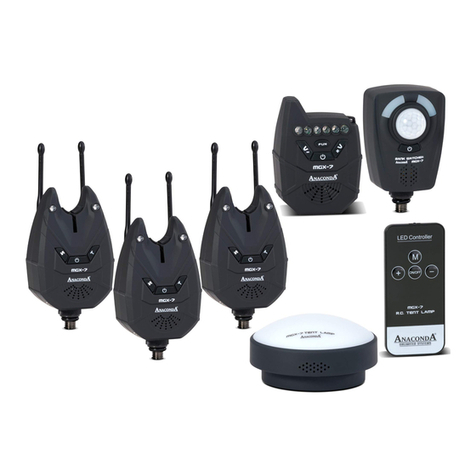
Anaconda
Anaconda Nighthawk MGX-7 manual
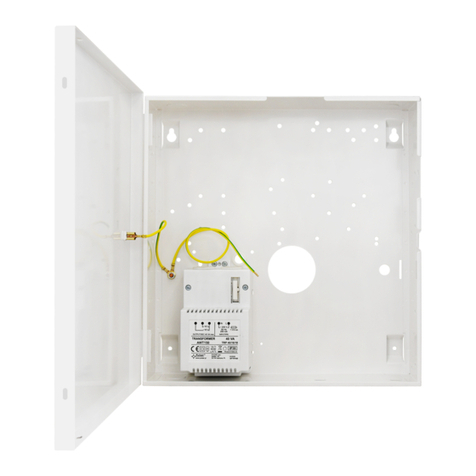
Pulsar
Pulsar DSC BOX Assembly instructions
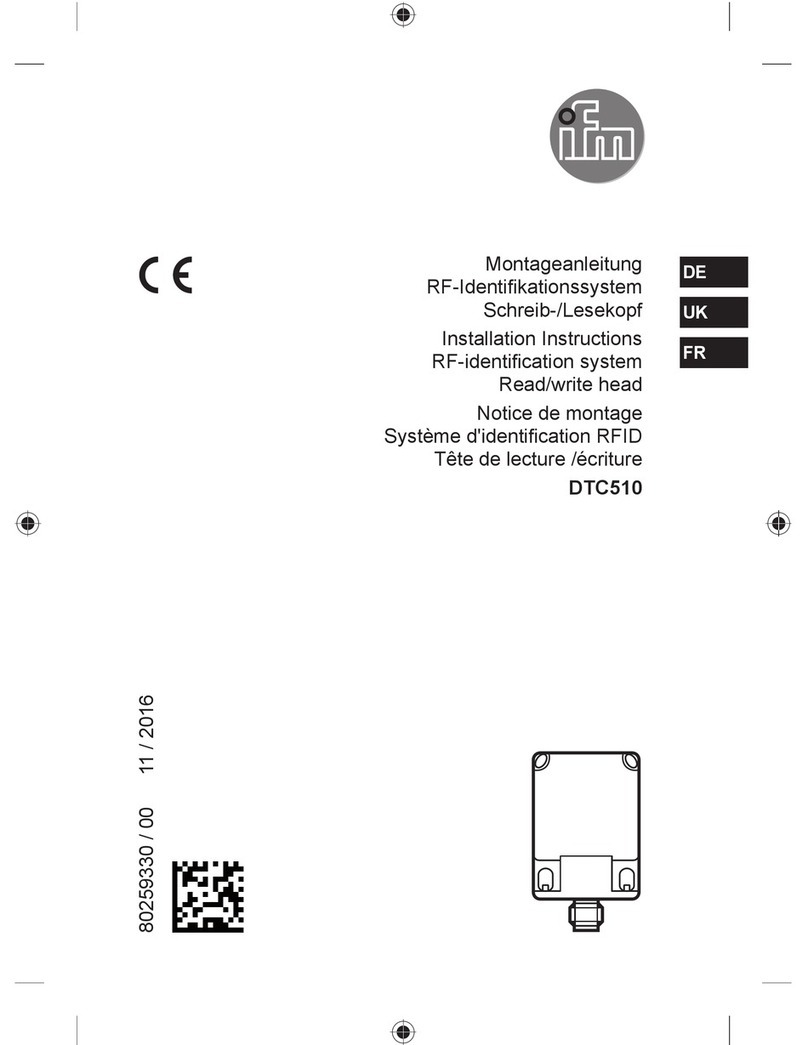
IFM
IFM DTC510 installation instructions
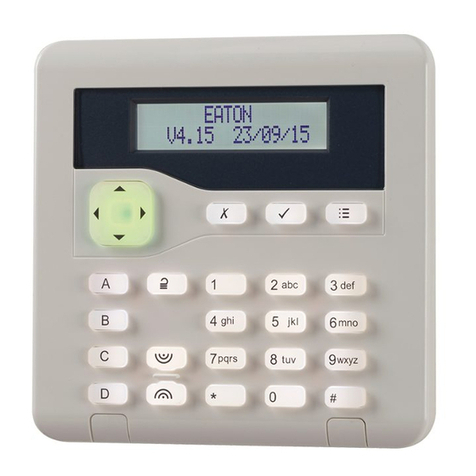
Eaton
Eaton i-on1000EX installation guide
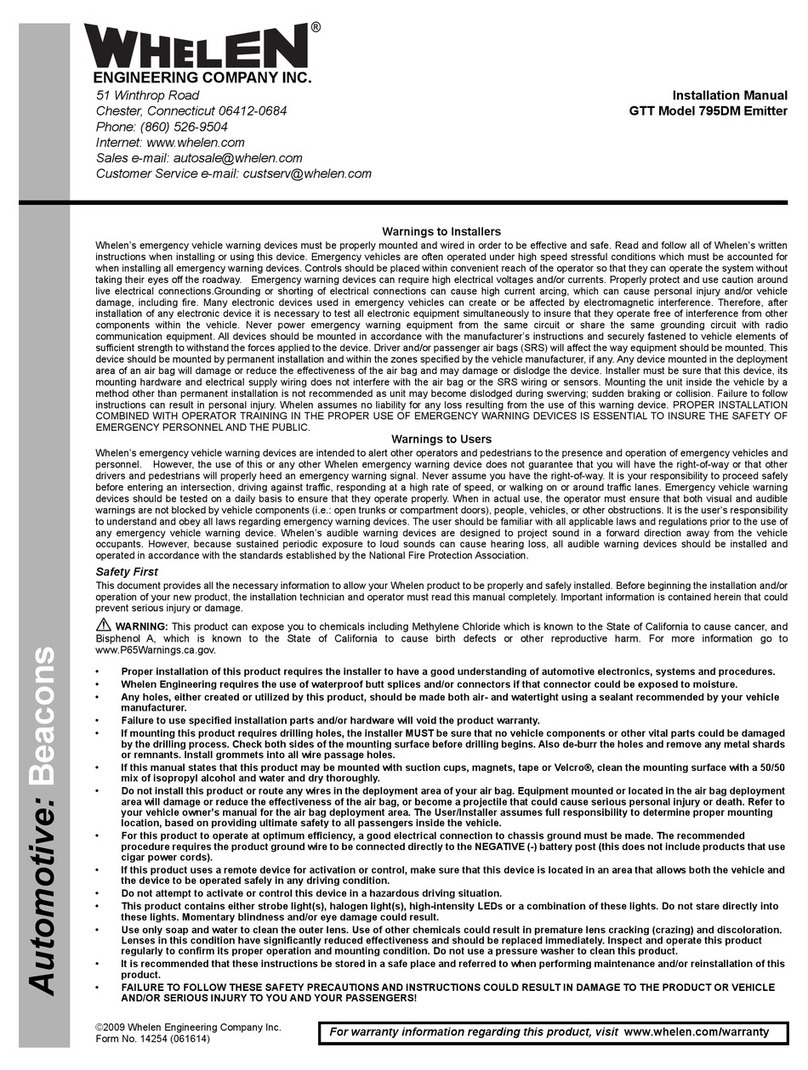
Whelen Engineering Company
Whelen Engineering Company GTT 795DM installation manual
